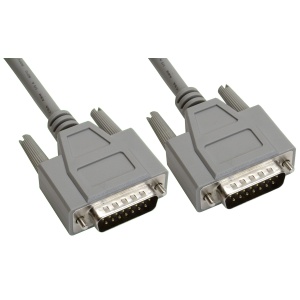Introduction
In the past few decades, technology has dramatically reshaped the world. From the proliferation of the internet to the advent of smartphones, we’ve seen technology seep into every facet of our lives. Yet, it doesn’t stop there; the realms of audio and visual technology are also undergoing a seismic shift. This article will dive deep into these changes, exploring the emerging trends in audio/visual technology and their implications on the world of entertainment, communication, and beyond.
Emerging Trends in Audio/Visual Technology
As we advance into the 21st century, the barriers between reality and the digital world continue to diminish. The continuous evolution of audio/visual technology stands at the heart of this transformation, providing new, immersive ways for us to interact with digital content.
The Rise of Immersive Audio
From spatial audio in home theatres to 3D sound in virtual reality, immersive audio has become an essential part of the audio/visual experience. It adds a layer of realism, allowing us to perceive sound from different directions, much like in the real world. This technology has seen rapid growth and development, finding applications in various domains such as gaming, movies, and music production.
High Dynamic Range (HDR) and Ultra High Definition (UHD)
HDR and UHD are reshaping visual technology, enabling more vibrant and realistic imagery. HDR allows for a broader range of colors and increased contrast, making the images on our screens closer to what our eyes perceive in reality. Meanwhile, UHD, also known as 4K, offers four times the resolution of standard high definition, resulting in sharper, more detailed visuals.
Artificial Intelligence in Audio/Visual Technology
Artificial Intelligence (AI) has permeated numerous industries, and audio/visual technology is no exception. From optimizing sound quality in real-time to enhancing visual effects with machine learning algorithms, AI is revolutionizing the way we interact with and consume audio/visual content.
Augmented Reality (AR) and Virtual Reality (VR)
AR and VR technologies offer immersive experiences by blending the digital and physical worlds. With the growing accessibility of AR and VR headsets, more and more consumers are diving into these immersive worlds, for both entertainment and educational purposes.
Blockchain and NFTs in Digital Media
Blockchain technology and Non-Fungible Tokens (NFTs) are transforming the digital media landscape. These technologies provide creators with new ways to monetize their work, reshaping the economics of the audio/visual industry.
The Future of Audio/Visual Technology: What Lies Ahead?
The evolution of audio/visual technology is far from over. New advancements like holographic displays, quantum computing, and neurolink technology will further blur the lines between the physical and digital worlds.
FAQs on Emerging Trends in Audio/Visual Technology
What is immersive audio? Immersive audio is a technology that produces multi-dimensional sound, creating a more realistic and immersive listening experience. It achieves this by utilizing multiple speakers or headphones to deliver sound from different directions.
How does AI impact audio/visual technology? AI plays a pivotal role in enhancing audio/visual experiences. It’s used in various applications, such as enhancing image and sound quality, generating realistic visual effects, and even personalizing content recommendations based on user preferences.
What are AR and VR technologies? AR, or Augmented Reality, superimposes digital content onto the real world, whereas VR, or Virtual Reality, immerses the user in a completely digital environment. Both technologies offer immersive experiences, transforming the way we interact with digital media.
How are blockchain and NFTs transforming digital media? Blockchain technology and Non-Fungible Tokens (NFTs) are changing the way creators monetize their work. With NFTs, digital content such as audio, video, and artwork can be tokenized and sold, providing creators with new avenues for income.
What are some future trends in audio/visual technology? Emerging trends include advancements like holographic displays, which project three-dimensional images into space, and neurolink technology, which aims to enable direct communication between the human brain and digital devices. Quantum computing could also revolutionize audio/visual technology by providing enormous computational power.
What is HDR and UHD in visual technology? HDR, or High Dynamic Range, allows for a broader range of colors and increased contrast in visuals, creating more vibrant and lifelike images. UHD, or Ultra High Definition, often referred to as 4K, offers a significantly higher resolution than standard high definition, resulting in sharper, more detailed visuals.
Conclusion
The emerging trends in audio/visual technology are undoubtedly shaping the future of our digital experiences. As we continue to tread this digital frontier, we can expect even more exciting developments. The possibilities are boundless, and the future of audio/visual technology promises to be an exciting journey. So, let’s tune in, and keep our eyes and ears open to the mesmerizing symphony of the digital age!












